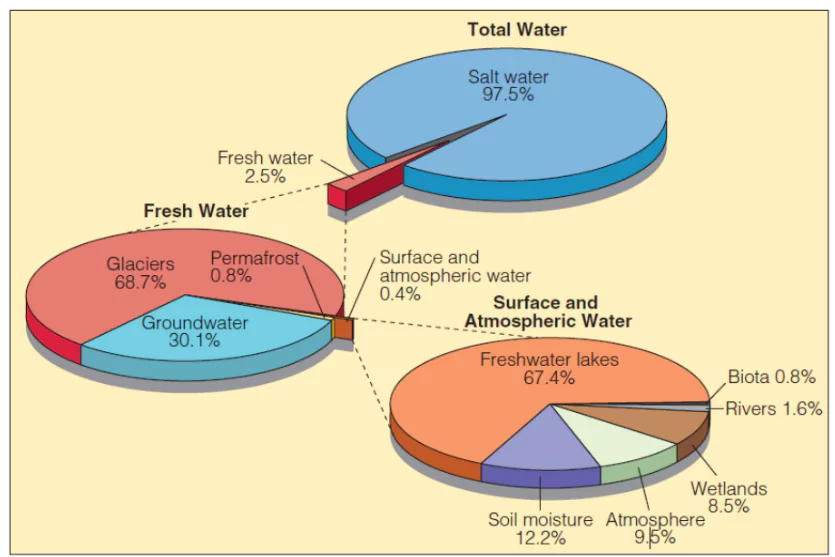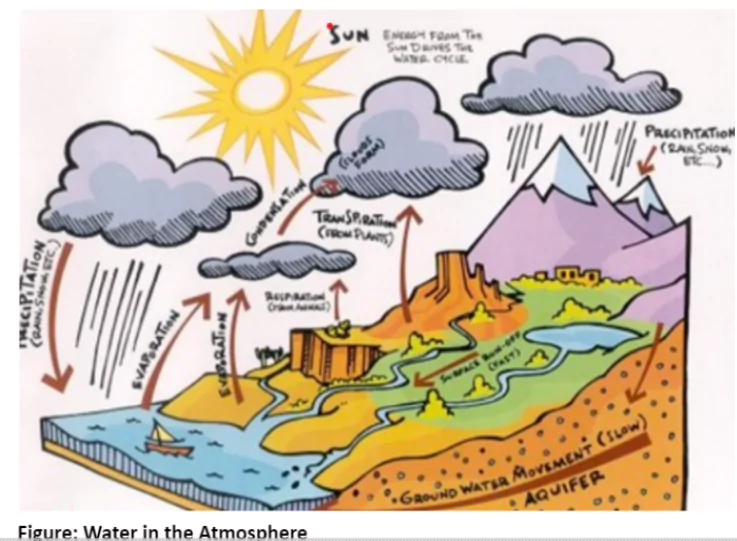![]() April 29, 2024
April 29, 2024
![]() 4413
4413
![]() 0
0
Water exists in the air in three forms: gas, liquid, and solid, contributing to weather patterns. It comes from evaporation of water bodies and plants. The amount of water vapour in the air is called humidity, with absolute humidity measuring the actual amount and relative humidity comparing it to the air’s capacity at a specific temperature. Saturated air can’t hold more moisture, marked by the dew point temperature.

| Process | Meaning |
| Condensation |
|
| Transpiration |
|
| Evaporation |
|
| Precipitation |
|
Water vapour present in the air is known as humidity.
 Formation of Various Cloud Types: These types can combine to form high, middle, low, or vertically developed clouds.
Formation of Various Cloud Types: These types can combine to form high, middle, low, or vertically developed clouds.
| Must Read | |
| Current Affairs | Editorial Analysis |
| Upsc Notes | Upsc Blogs |
| NCERT Notes | Free Main Answer Writing |
<div class="new-fform">
</div>
Latest Comments